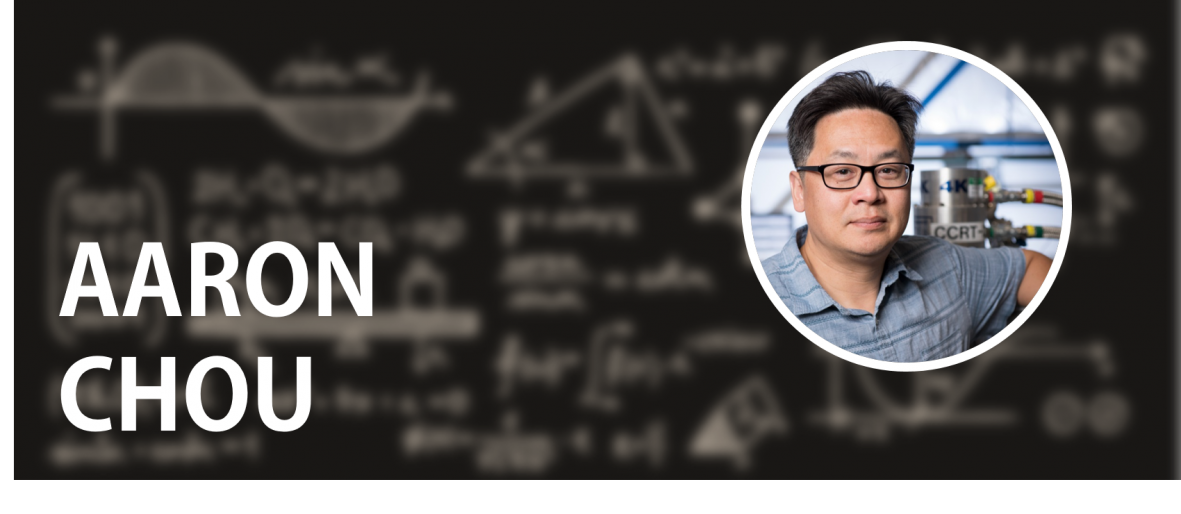WHAT DID THE 2011 EARLY CAREER AWARD ALLOW YOU TO DO?
The Early Career Award (ECA) allowed me to begin my first investigations into the fundamental nature of information, entropy, and noise (unwanted fluctuations on measured signals) in space-time. The support from the award paved the way to my present work both in detailed quantum noise studies for ultrasensitive dark matter detection and developing devices for quantum information science.
The ECA funded the development of the Holometer experiment at Fermilab – an experiment to test whether there is any fundamental physical limit on the precision of quantitative measurements.
The Holometer experiment allowed me to work closely with top experts in optical interferometry, apply quantum optics from LIGO, and bring new techniques into the field of high energy physics. We achieved our goals of testing and refuting specific models of how fundamental information might be stored in space-time; we also produced the world’s best measurements of object positions with precision at the level of 10^-20 m.
Building on this experience, I applied my deep understanding of quantum noise to my new role as the data analysis chair for DOE’s ADMX-G2 dark matter search experiment.
The extremely small expected dark matter signal level requires detectors with ultralow noise. In this ongoing experiment, we have also been able to achieve world-leading sensitivity to a dark matter candidate called the axion, originally proposed to solve long-standing problems in the fundamental theory of protons and neutrons.
I also lead a multi-institutional DOE-HEP QuantISED consortium to develop new quantum sensors to enable broader searches for dark matter of various types. My leadership in the dark matter field has been recognized by American Physical Society-Division of Particles & Fields which selected me to be one of the Cosmic Frontier co-conveners for the 2021 Snowmass community study.
I am also furthering the engagement between high energy physics and the condensed matter physics community with the goal of cross-fertilizing the two fields by transferring each other’s technologies and expertise. I serve as the Devices and Sensors lead for the Quantum Science Center, a DOE National Quantum Information Science Research Center. This center is managed by Oak Ridge National Laboratory in partnership with other national labs including Fermilab as well as university groups. A key application is the development of novel topological quantum materials and new kinds of qubits. These materials may find use in robust quantum computing and highly customizable quantum detectors of the future.
ABOUT:
Aaron S. Chou is a senior scientist at the Fermi National Accelerator Laboratory.
SUPPORTING THE DOE SC MISSION:
The Early Career Research Program provides financial support that is foundational to early career investigators, enabling them to define and direct independent research in areas important to DOE missions. The development of outstanding scientists and research leaders is of paramount importance to the Department of Energy Office of Science. By investing in the next generation of researchers, the Office of Science champions lifelong careers in discovery science.
For more information, please go to the Early Career Research Program.
THE 2011 PROJECT ABSTRACT:
Search for Holographic Noise from the Planck Scale
This grant will enable the construction and operation of the Fermilab Holometer, the world’s most sensitive microscope for detecting tiny spatial position jitter, correlated between neighboring objects.
The holometer is a new, modest‐scale double Michelson interferometer device, optimized to isolate and measure a recently predicted position noise spectrum arising from a Planck scale information bound implied by the holographic principle in black hole thermodynamics. Very few probes of quantum effects at the Planck scale are known, and the present search for holographic noise represents one of the most cost-effective ways to probe this extremely high energy scale.
Should the holometer successfully detect the predicted noise spectrum, this detection will represent a first glimpse of the microphysics controlling the fundamental structure of space and time. The nature of this new physics can be elucidated with reconfigurations of the holometer and eventually with more elaborate future devices. If no exotic noise is detected, even at levels well below the predicted magnitude, a set of theoretical ideas of Planck scale information encoding will have been put to rest.
In either case, the holometer represents a rare and valuable probe of Planck scale microphysics and may answer some profound questions about our possibly holographic reality.
RESOURCES:
Holometer Collaboration, A. Chou, et al., “Interferometric Constraints on Quantum Geometric Shear Noise Correlations.” Class. Quant. Grav. 34, 16, 165005 (2017). [DOI: 10.1088/1361-6382/aa7bd3]
Holometer Collaboration, A. Chou, et al., “First Measurements of High Frequency Cross-Spectra from a Pair of Large Michelson Interferometers.” Phys. Rev. Lett. 117, 11, 111102 (2016). [DOI:10.1103/PhysRevLett.117.111102]
DOE Explains… offers straightforward explanations of key words and concepts in fundamental science. It also describes how these concepts apply to the work that the Department of Energy’s Office of Science conducts as it helps the United States excel in research across the scientific spectrum. For more information on dark matter and DOE’s research in this area, please go to “DOE Explains…Dark Matter.”
Additional profiles of the Early Career Research Program award recipients can be found at https://www.energy.gov/science/listings/early-career-program.
The Office of Science is the single largest supporter of basic research in the physical sciences in the United States and is working to address some of the most pressing challenges of our time. For more information, please visit www.energy.gov/science.
Sandra Allen McLean is a Communications Specialist in the Office of Science, Office of Communications and Public Affairs sandra.mclean@science.doe.gov.
